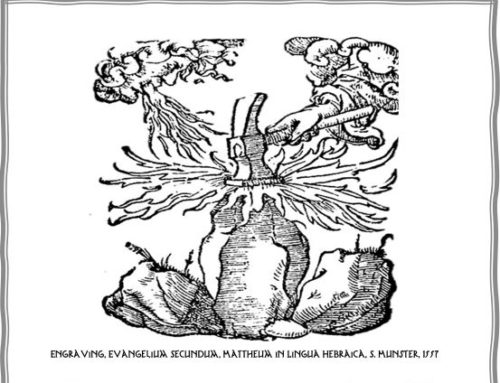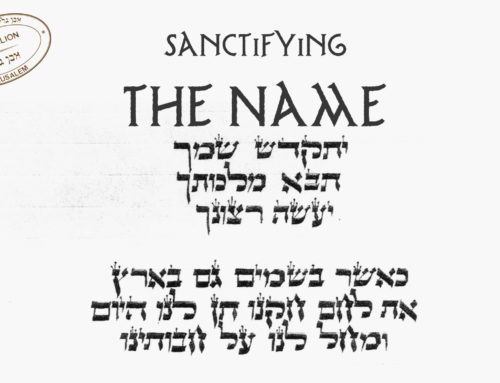Could there be a mysterious textual variant within the Hebrew Bible that speaks to the birth of the Messiah?
For to us a child is born,
a son will be given to us,
and the government will be upon His shoulder.
His Name will be called
Wonderful Counselor,
Mighty God
My Father of Eternity,
Prince of Peace.
Of the increase of His government
and shalom there will be no end—
on the throne of David and over His kingdom—
to establish it and uphold it
through justice and righteousness
from now until forevermore.
The zeal of Adonai-Tzva’ot
will accomplish this.
(Isaiah 9:5-6)
 It is precisely at the Hebrew expression “of the Increase” (Lemarbeh – לםרבה), that some see a hint of the Messiah’s virgin birth. Here, instead of the proper letter “mem” (מ) normally used within a word, the Hebrew writer used a final ‘mem’ (ם).
It is precisely at the Hebrew expression “of the Increase” (Lemarbeh – לםרבה), that some see a hint of the Messiah’s virgin birth. Here, instead of the proper letter “mem” (מ) normally used within a word, the Hebrew writer used a final ‘mem’ (ם).
The Talmud from more than 1500 years ago puzzled over this unique occurrence saying,
“Why is every ‘mem’ in the middle of a word open, whilst this is closed?”
It concludes that the ‘final mem’ in its closed form refers to the secret of the Messiah.1
Could it be that the Hebrew letters themselves reveal a mystery regarding the miraculous birth of Yeshua?
In the Hebrew alphabet there are 22 letters. Five of the 22 have a beginning and an ending form. One of those five is the letter “mem”. When the letter occurs at the beginning or inside of a word it looks like this: “מ”. When the letter occurs at the end, it uses a special ending form “ם”.
However, there is one place in the Hebrew Bible where we find a ‘final mem’ (ם) occurring in the middle of a word – Isaiah 9: 7 (verse 6 in the Hebrew text).2 What could this mean, if anything?
The closed ‘mem’ (ם): A symbol of the virgin womb?
First, the ancient commentaries on the Bible did not consider this to be a mistake; it was intentionally written this way in order to bring attention to that particular text. The letter ‘mem’ in Jewish thought is associated with the womb and even resembles a womb. While the open ‘mem’ (מ) is symbolic of a womb ready to give birth, the final or closed mem (ם) symbolizes a closed womb.3
Yehuda Liebes of Hebrew University notes that this caused some to see a connection between the closed ‘mem’, and the womb of a ‘virgin’ (almah) in Is. 7: 14.4 (Note: Though some Hebrew Bibles use a corrected spelling; the most authoritative Masoretic text, the Aleppo Codex, has the unique final mem: לםרבה).
The ‘closed mem’ (ם) is without beginning or end
This unusual final form of the ‘mem’ occurs at the very point of the text which says, “Of the increase of his government there shall be no end.” The semi-circular / closed ‘final mem’ can be seen as symbolic of the infinite reign of the Messiah.
The closed ‘mem’ (ם) and the Messiah’s breakthrough.
In order for the Messiah to come forth from a unopened womb there must needs be a breakthrough. Both Risto Santilo and Yehuda Liebes note Christian and Jewish writers from the Middle Ages who wrote about the connection of the ‘closed mem’ and the Messiah breaking forth from a closed womb.5,6
One of the names of the Messiah in Rabbinic tradition is the “Poretz”, (the Breaker). Yeshua the Messiah has indeed broken forth from both the womb and the tomb. He is the One who has opened the way for all of us to have access to the Father. He has opened the Holy of Holies and torn down the wall of partition that separated Jew and Gentile.
If you need a breakthrough or find yourself in a closed situation with no exit, look to Yeshua; He is the one who can bring about a breakthrough in your life!
1. See discussion in San. 94a
2. See discussion on the unusual occurrence at the website for the Academy of the Hebrew Language: https://hebrew-academy.org.il/2011/03/29/אותיות-מנצפך/2?fbclid=IwAR11xWiftNtaL7DQgcFfZDTN9o4v0it-2-nMgF6mryBCYDfuSAE3yALulTc.
3. Rabbi Yitzchak Ginsburgh, The Hebrew Letters: Channels of Creative Consciousness, p.196
4. See the Hebrew article by Yehuda Liebes of The Hebrew University: “Christian Influences on the Zohar” https://liebes.huji.ac.il/files/hashpaot.pdf
5. See Risto Santila, The Midrash of the Messiah, p.162
6. Yehuda Liebes, Studies in the Zohar, “Christian Influences on the Zohar”, pp.139-161





